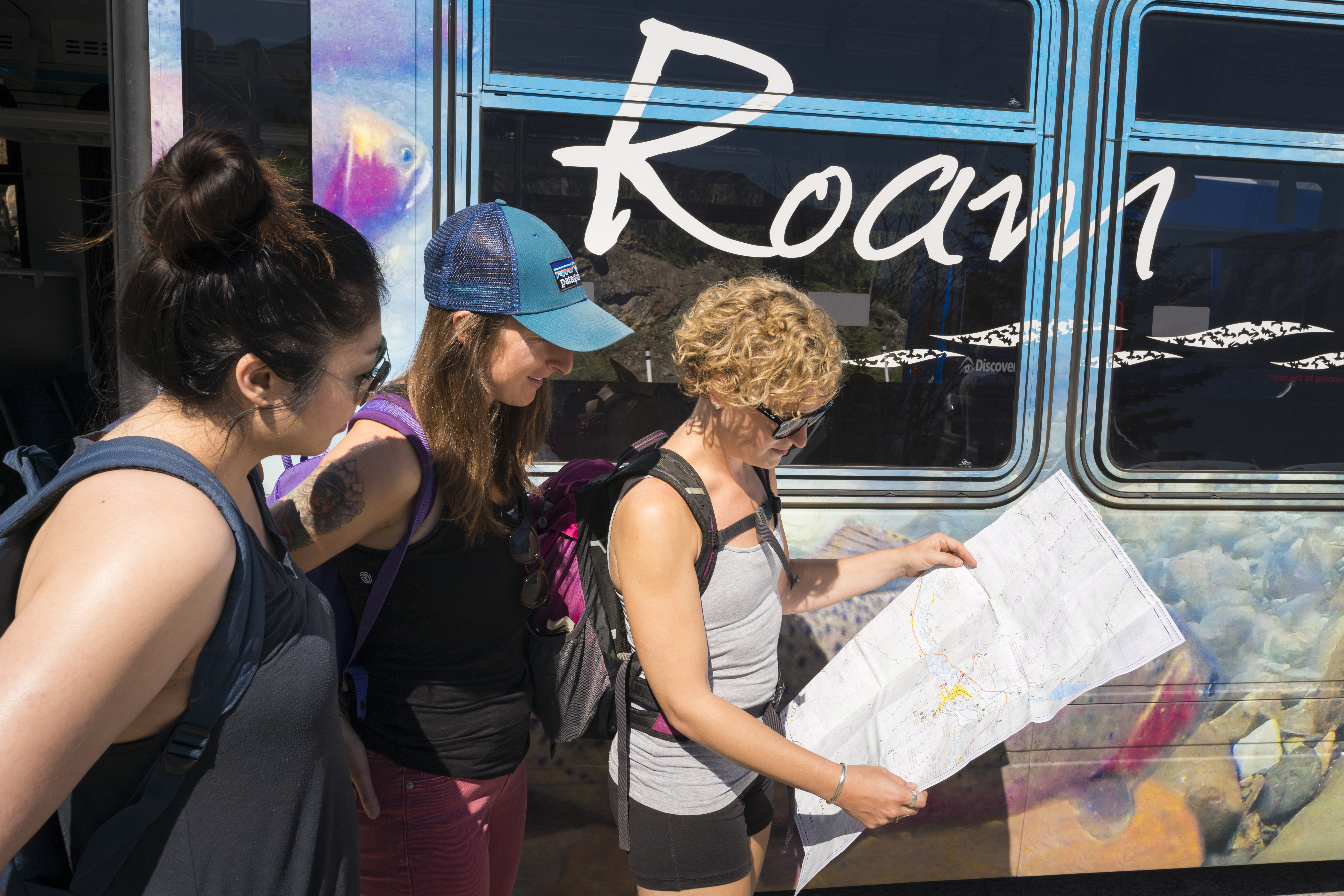Last month Parks Canada asked AMPPE for feedback on its draft Terms of Reference (ToR) for a proposed Expert People-Moving Panel. The ToR describes the purpose of the panel to develop a long-term holistic transportation strategy.
AMPPE has been consistent in calling on Parks Canada to develop a strategy to reduce congestion and greenhouse gas emissions while maintaining or improving access and visitor experience.
AMPPE is cautiously optimistic that this panel will design a strategy that will do just that; however, we are also concerned that the project scope as presented in the ToR will creep beyond the scope of people-moving. The scope outlined in the ToR asked the panel to, “look at other demand strategies” which is an open-ended task.
Parks Canada’s expressed outcome is: “Will result in a complete overhaul of the way people access and move around the park, with options for visitor movement that enhance overall efforts to reduce greenhouse gas emissions and support Parks Canada’s objectives for biodiversity and resource protection, visitor experience, sustainability, and authenticity.” (quote from Parks’ Canada’s briefing)
The idea of an expert panel of potentially non-local people making decisions about demand strategies for the Mountain Parks hits us a little close to home. For many members, recollections of an expert panel assembled to conduct the Banff Bow Valley Study of 1994-96 are still fresh. This panel made recommendations that would have restricted human access to the park.
In our feedback to Parks Canada on the ToR, we stated that consideration of demand strategies went beyond the scope of this panel and that we would firmly reject any strategies that included capping visitation or imposing quotas. We do not believe that the amount of visitors is the issue, but rather one of congestion, which can be solved with proper design.
Reg Bunyan from the Bow Valley Naturalists thinks differently. Bunyan feels the framework focuses too much on transportation and climate change and downplays ecological integrity. Bunyan is calling for a visitor management strategy to limit the number of people who can access Mountain Park amenities.
The proposed people-moving strategy panel allows for one member of the panel from the tourism sector. A member of AMPPE’s Board has put their name forward for consideration. We will keep you posted on this in further publications.
A LOOK BACK AT THE BOW VALLEY STUDY
Annual visitation of 19M people, an eight-lane highway, 10,000+ people living in the ‘City’ of Banff, and giant rock concerts at the Banff Centre were just a few predictions made by the five-person expert panel assembled to ‘reimagine’ a new vision for the Bow Valley in 1994.
The panel warned these predictions would come true unless Parks Canada took immediate action.
The panel asserted that Banff National Park was at a crossroads. It had to determine which path it would take – losing its UNESCO World Heritage status or drastically scaling back human use and enjoyment in the Mountain Parks to turn back the clock on development.
Here are just a few of the 1996 panel’s recommendations:
Erect fencing around the Town of Banff and all campgrounds (including temporary backcountry camps)
Limit the number of summer visitation on popular trails such as Johnston Canyon and the central Cascade area to under 100 people per month
Close the West Spray Lakes Trail
Residents of Banff must accept the limits of living in a national park and endure a lack of affordable housing and limited community services
Contrary to these dire predictions, a 2018 science-based State of the Park Assessment from Parks Canada confirms that key ecological integrity indicators are in good condition and that visitor satisfaction within the Park remains high.
It is also notable that the visitation level in Banff National Park of close to 4 million people in 2016-17 represents only 20 percent of the estimated projections in the BBVS.
The BBVS was lauded by many in Parks Canada and the federal government as a success, however, recreationalists and local businesses were outraged. AMPPE was formed to provide a unified voice to question these predictions and bring balance, local input, and common sense into park decision-making.
AMPPE is closely monitoring the evolution of the panel.


